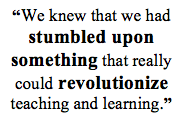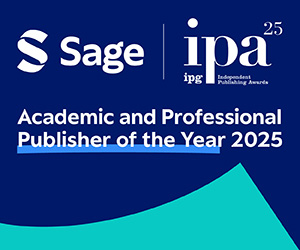What Makes Students Want To Learn?
 Editor’s note: We are pleased to welcome Stefanie L. Boyer of Bryant University. Her paper, “Self-Directed Learning: A Tool for Lifelong Learning,” co-authored by Diane R. Edmondson, Andrew B. Artis and David Fleming, is forthcoming in the Journal of Marketing Education and now available in OnlineFirst.
Editor’s note: We are pleased to welcome Stefanie L. Boyer of Bryant University. Her paper, “Self-Directed Learning: A Tool for Lifelong Learning,” co-authored by Diane R. Edmondson, Andrew B. Artis and David Fleming, is forthcoming in the Journal of Marketing Education and now available in OnlineFirst.
 As academics, our livelihood is based on how well we educate our students and ourselves. The conventional approach to learning and teaching is good and has worked for years, but we were on a quest to find a novel approach to train people that had the potential to change the paradigm of learning-to change the way we learn and teach. The area of self-directed learning (SDL) piqued our interest because so much research has been conducted in the area over several decades. The initial results seemed favorable, so we quantified the entire stream of SDL data with a meta-analysis.
As academics, our livelihood is based on how well we educate our students and ourselves. The conventional approach to learning and teaching is good and has worked for years, but we were on a quest to find a novel approach to train people that had the potential to change the paradigm of learning-to change the way we learn and teach. The area of self-directed learning (SDL) piqued our interest because so much research has been conducted in the area over several decades. The initial results seemed favorable, so we quantified the entire stream of SDL data with a meta-analysis.
 The findings from the meta-analysis amazed us. We knew self-directed learning (SDL) was different, but we didn’t grasp the true impact it would have on performance outcomes. It almost seemed as if it was too good to be true. Once we began implementing SDL in the classroom, we knew that we had stumbled upon something that really could revolutionize teaching and learning. Not only did student learning outcomes improve, but their appreciation for learning and their motivation to learn shot through the roof. We were surprised at how much more students could learn when they used self-directed learning.
The findings from the meta-analysis amazed us. We knew self-directed learning (SDL) was different, but we didn’t grasp the true impact it would have on performance outcomes. It almost seemed as if it was too good to be true. Once we began implementing SDL in the classroom, we knew that we had stumbled upon something that really could revolutionize teaching and learning. Not only did student learning outcomes improve, but their appreciation for learning and their motivation to learn shot through the roof. We were surprised at how much more students could learn when they used self-directed learning.
We are already implementing self-directed learning in the classroom and in our own learning because we see how much is motivates and engages us and our students. In moving forward, there are so many questions to answer about how to train people most effectively using this method, and how to select learners who will benefit the most. We plan to continue working in the area, but there is so much to learn about self-directed learning that we need more research partners to help us uncover valuable insights from this bountiful learning and training method.
Read the paper, “Self-Directed Learning: A Tool for Lifelong Learning,” online in the Journal of Marketing Education.
Stefanie L. Boyer is an Assistant Professor at Bryant University in Smithfield, Rhode Island. Her research stream seeks to improve sales training and development and extend the self-directed learning paradigm.






























































































Thank you for reblogging this, rbstat.
If you follow the link to the article, it explains how to implement it in the classroom and provides a detailed example with instructions. Good luck, and I’m happy to answer any questions!
Reblogged this on EduAthletics.
Excellent. We need to know how to implement it in classroom